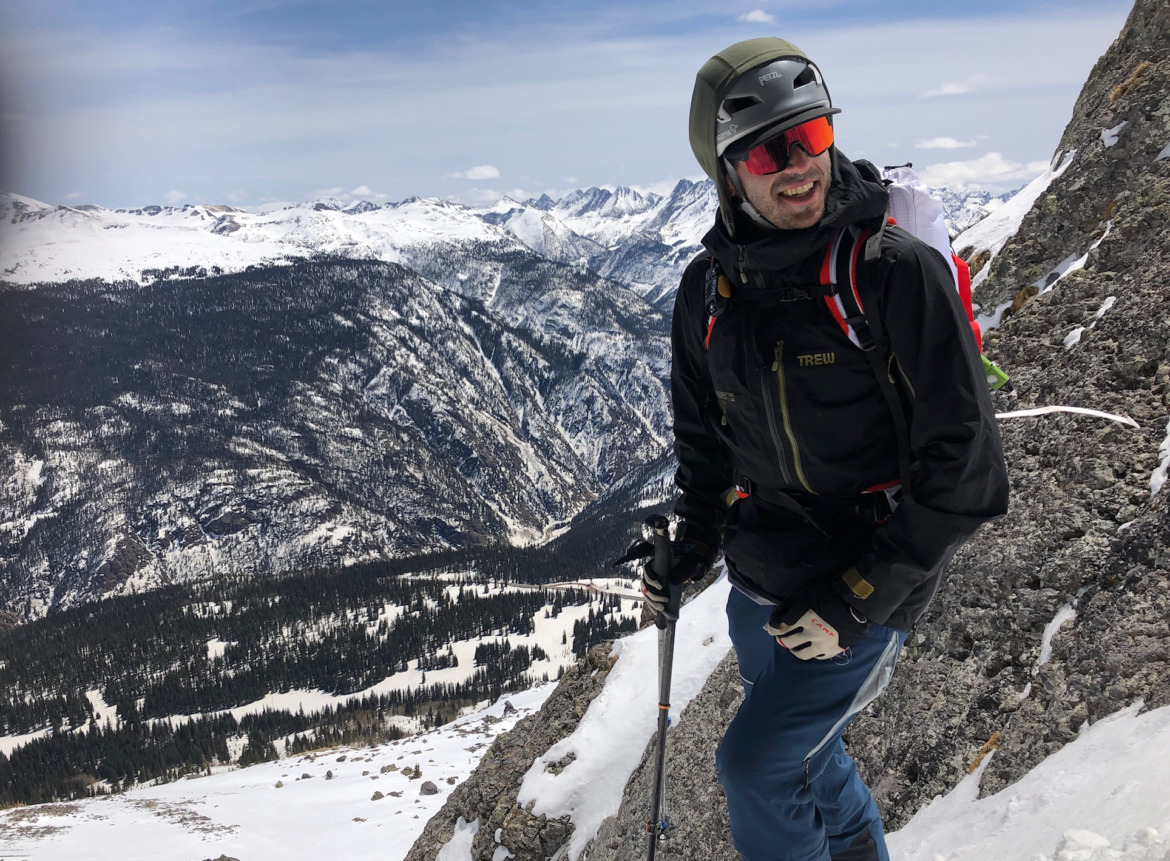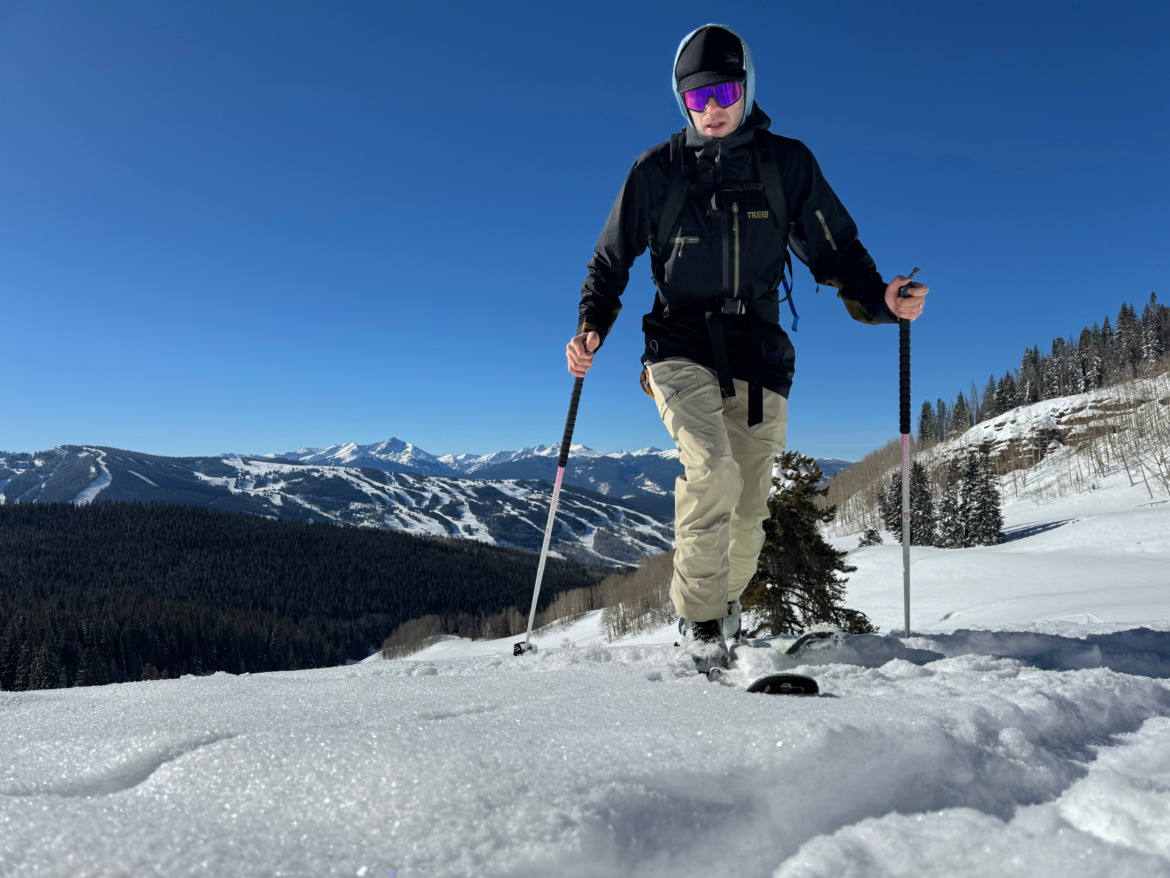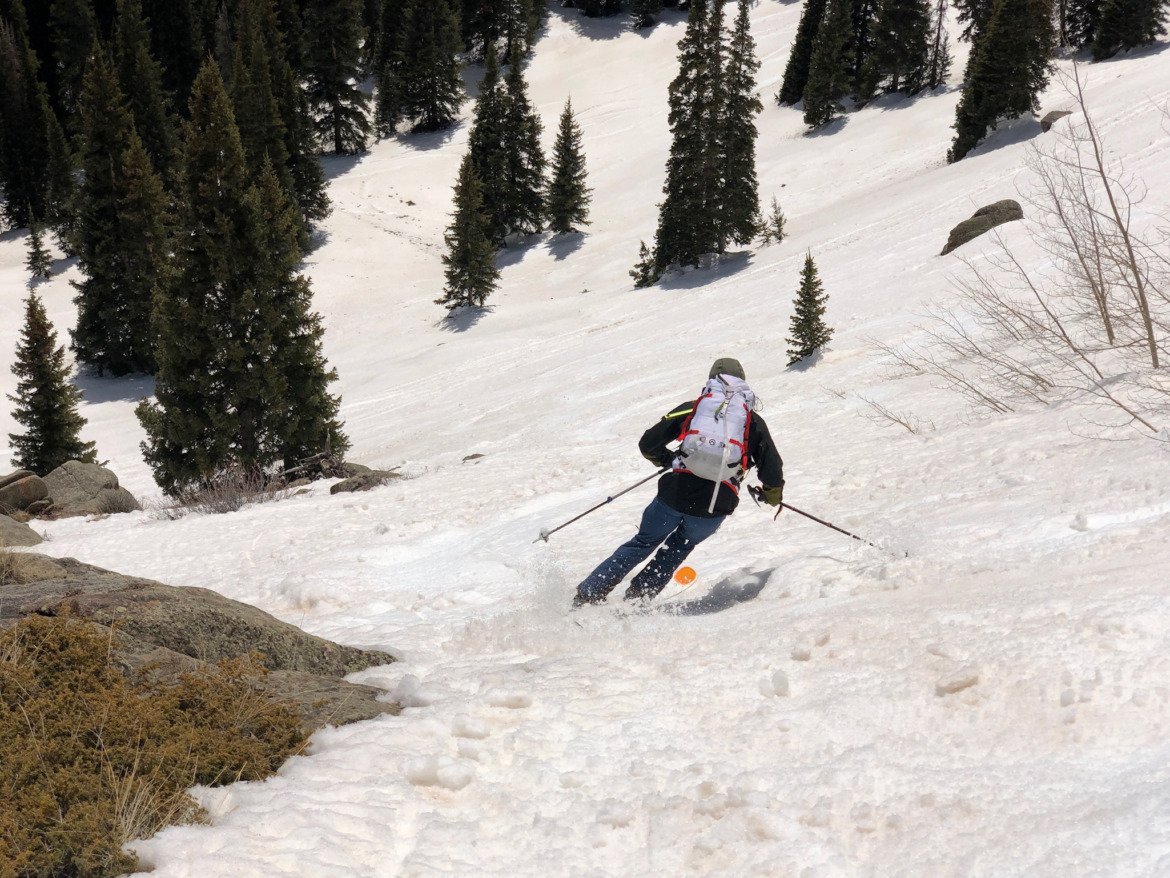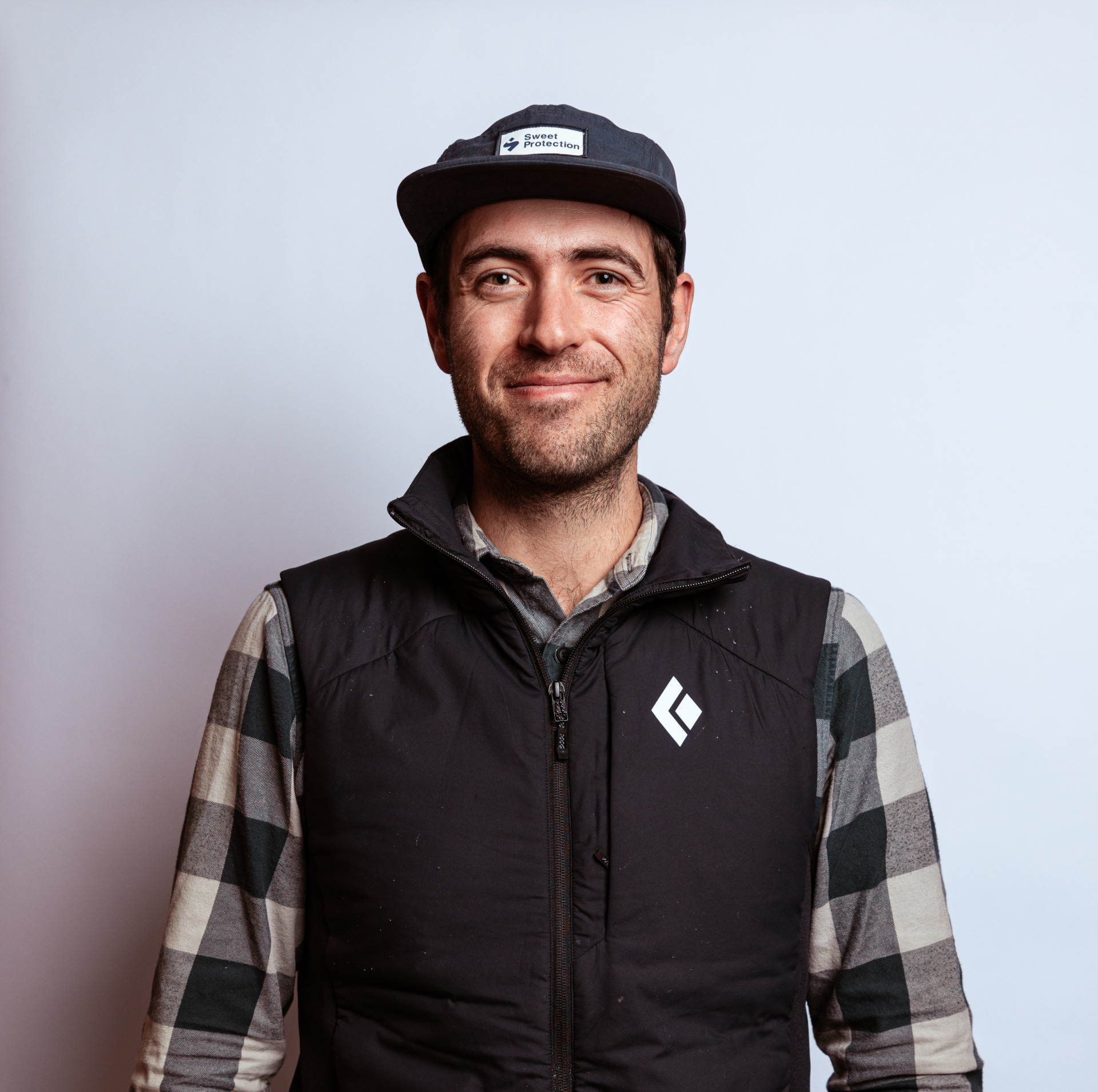
It was 2008 when I first slapped skins on a pair of skis, my dad’s ~210cm tele skis from the early 90’s. I also borrowed his old Patagonia anorak rain jacket that had seen about as many years as the skis.
Since that first uphill skiing adventure (and treacherous nighttime telemark experiment), I’ve been searching for a jacket that breathes better. But not just better – I’ve been on the hunt for the ultimate breathable shell that stays on, keeps me dry, protected, and moving for the full length of a tour regardless of the weather conditions. Spoiler: I haven’t found it yet.
I run wildly warm on the skin track. So when someone says to me, “the kit is optimized for breathability in warm conditions,” I’m skeptical but also drawn like a moth to a flame.
Trew’s LW 3L collection, which launched last March, is topped with the Le Skieur Anorak. Trew claims it’s light, breathable, and waterproof – a layer that protects against the elements but can manage the temperature fluctuations of spring. It’s the first product to come out of their new “Experimental Division” with design input from Swiss IFMGA Guide, Gilles Sierro.
Specs
- Two-way center front zipper
- Side zipper for entry and large venting
- Long, straight fit for added weather protection and movement
- Horizontal chest pocket optimized for radio
- Vertical chest pocket fits large items like gloves
- Two interior mesh pockets for skins
- Seamless integration with a backpack
- Extra high collar and adjustable hood for protection from the elements
- 3L7D: Ultralight 3L fabrication
- 20k wp / 30k breathable
- Durable ripstop nylon shell
- Highly breathable membrane
- 7d circular knit backing

Anorak Styling
What is an anorak? It’s a pullover jacket, usually with a quarter zip. But why an anorak? I asked myself this question over and over while I was testing the Le Skieur and I’m not sure that I landed on a great answer. If I had to hazard a guess, I’d say it looks cool, it’s different, there’s less zipper weight on the front, no zipper in the backpack waist belt area, and they’re typically cut longer, but none of those have me convinced one way or the other. “It looks cool” might be my best guess.
The Le Skieur LW Anorak’s cut is fresh, and that’s not an adjective that every backcountry skier is looking for in their outerwear. I dig it, though. The silhouette is long, narrow, modern, and aesthetic. At 185cm, 85kg, I went with the Medium and it fits great with room for layers underneath.
That length had me worried at first that it might impede long strides like other long hardshells, but I didn’t find that to be the case. It doesn’t fall low enough to be an issue. It’s just short enough that it can tuck in underneath a harness, like Petzl’s Altitude, easily too. The narrow cut keeps it from bunching over or underneath the harness belt.
One feature I liked, which of course isn’t dependent on being an Anorak, is the full-length elbow-to-waist zipper that fully opens the side of the jacket. I appreciate big vents on hardshells and this one dumped heat when I needed it too.
The only thing about an anorak that annoyed me was pulling it on and off over my hat/helmet combo which felt a little bit clumsy. There’s also no pulling this thing off while you’re moving with a backpack on.
The freeride cut made it versatile for resort use, too. It’s super thin so it’s not a fortress of warmth by any means, but It worked well when matched with the right base and mid-layers.
Weight and Breathability
When I first opened up the Le Skieur, I was pleasantly surprised by its weight, a verified 457g in size medium. The ripstop fabric is quite thin, like paper thin, more comparable to a lightweight rain jacket like Patagonia’s Alpine Houdini than GORE-TEX Pro.
As you’d expect from a hardshell, the 20,000mm waterproofing repels moisture in all of its forms. I ended up testing it as a rain jacket over the summer during a multi-day canoe trip, and I can confirm that it’s plenty waterproof even in hours of dumping rain. Box checked.

The 3L fabric does not feel quite as breathable as GORE-TEX, but it’s close. I noticed slightly more condensation accumulating on the inside of the shell than I’d typically find on class-leading hardshells, like my Norrøna Senja GORE-TEX Active running shell that pulls double duty for ski touring. The Le Skieur’s generous venting helps make it more than reasonable for a hardshell, though, especially when you aren’t trying to wear it while charging uphill.
That said, even though I was sweating, I didn’t feel like I was overheating as quickly as heavier GORE-TEX Pro shells. The superlight fabric helped keep me cool. But of course, excess sweat and condensation can get really cold fast in the winter.
Despite being so thin and light, I’ve been impressed by the 3L material’s durability, especially since the Le Skieur was my go-to rain jacket all last summer. The jacket shows no signs of premature wear, and I haven’t managed to puncture it yet.
Pocket Layout
The anorak sports a big Napoleon chest pocket on the left side that’s roomy and the zipper is easy to toggle with gloved hands. There’s also a stretchy mesh inner pocket in there to keep your phone from bouncing around.
I was confused at first by the radio pocket on the right chest. It makes sense for guides who are carrying professional-level radios that aren’t designed for backcountry skiing and thus don’t have alligator clips like BCA Links or carabiners like Rocky Talkies. They can drop the radio right in there, hear it when they need to, and fish it out to transmit. The antenna will stick out through the zipper, though.
Given that most backcountry skiers can attach their FRS radio to their pack’s shoulder strap just a few inches to the right, the radio pocket feels kind of awkward. It’s not the easiest thing to get a gloved hand into, and objects inside of it sit awkwardly on your chest. My phone, for example, flops sideways. Another Napoleon pocket would be better in my opinion, but some folks might disagree on that one.
The Le Skieur also includes two skin pockets inside the chest that are easy to access via the two-way main zipper. I liked being able to stash skins without fully opening the jacket from the top during a storm. Add that to the pros column of “why an anorak.”

Conclustion
Another highlight of the Le Skieur? The price. It was discounted to $400 on Trew’s website at the time of writing, down from $499. That’s about half the price of Norrona’s top-end Lofoten Gore-Tex Pro Anorak. Even at MSRP, it’s a significantly cheaper price point than GORE-TEX Pro jackets, and generally cheaper than GORE-TEX and GORE-TEX Active shells.
Bottom Line: the Le Skieur is a refreshingly modern, lightweight anorak-style hardshell jacket designed for ski touring and mountaineering. While it’s aimed at the warmer spring months, warm-running people like me will be psyched to tour with it in the depths of winter, too.

Bergen Tjossem is a ski fanatic, conservation professional, and nature nerd based in Vail, Colorado. His life and career have centered around protecting the natural environment and public lands that raised him, but as Ed Abbey put it, “It is not enough to fight for the land; It is even more important to enjoy it.” So when he’s not working his day job, you’ll find Bergen ski touring before dawn, ice climbing in the dark, running trails until his legs fall off, skiing 13er’s with his friends, or making the world’s best pizza with his wife, Rachel. You can find him on Instagram.
